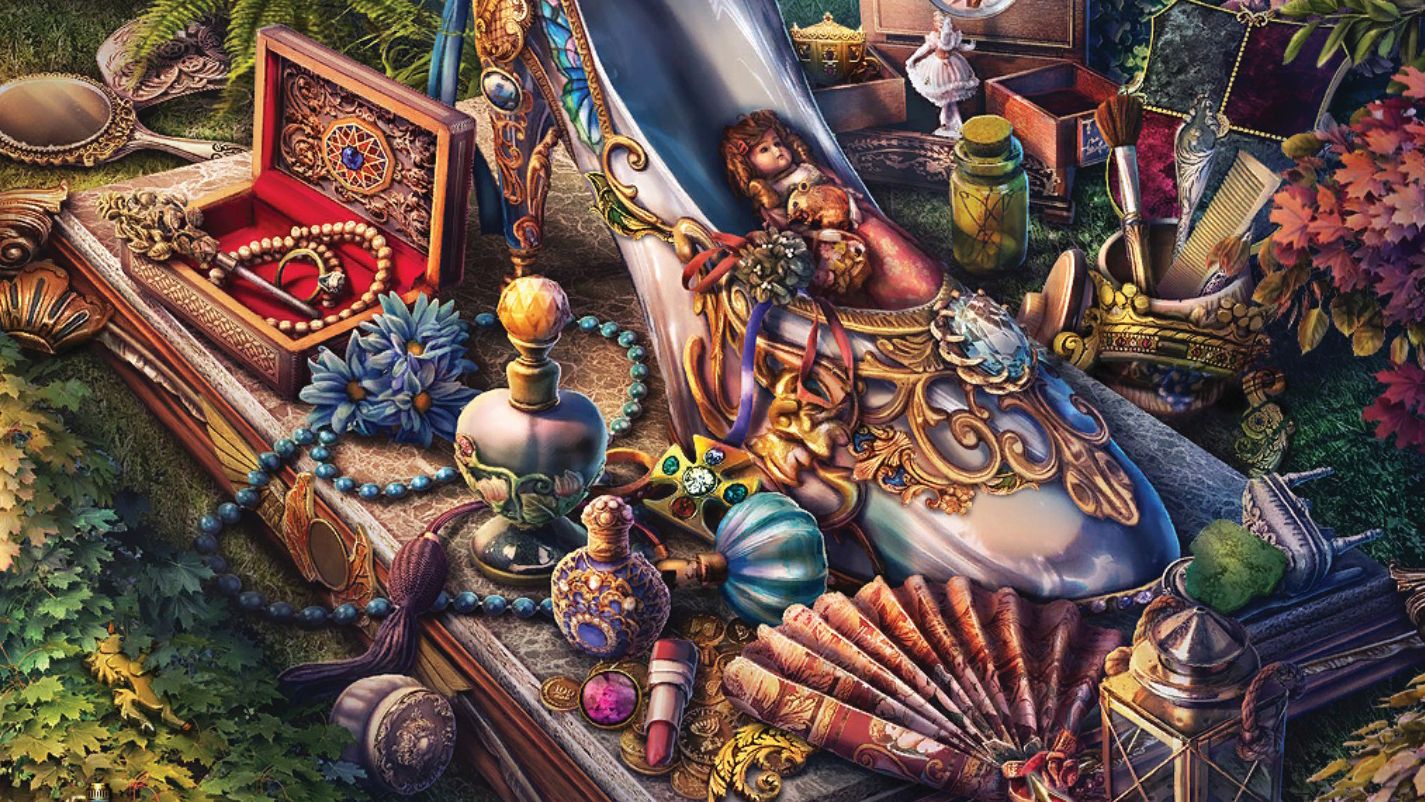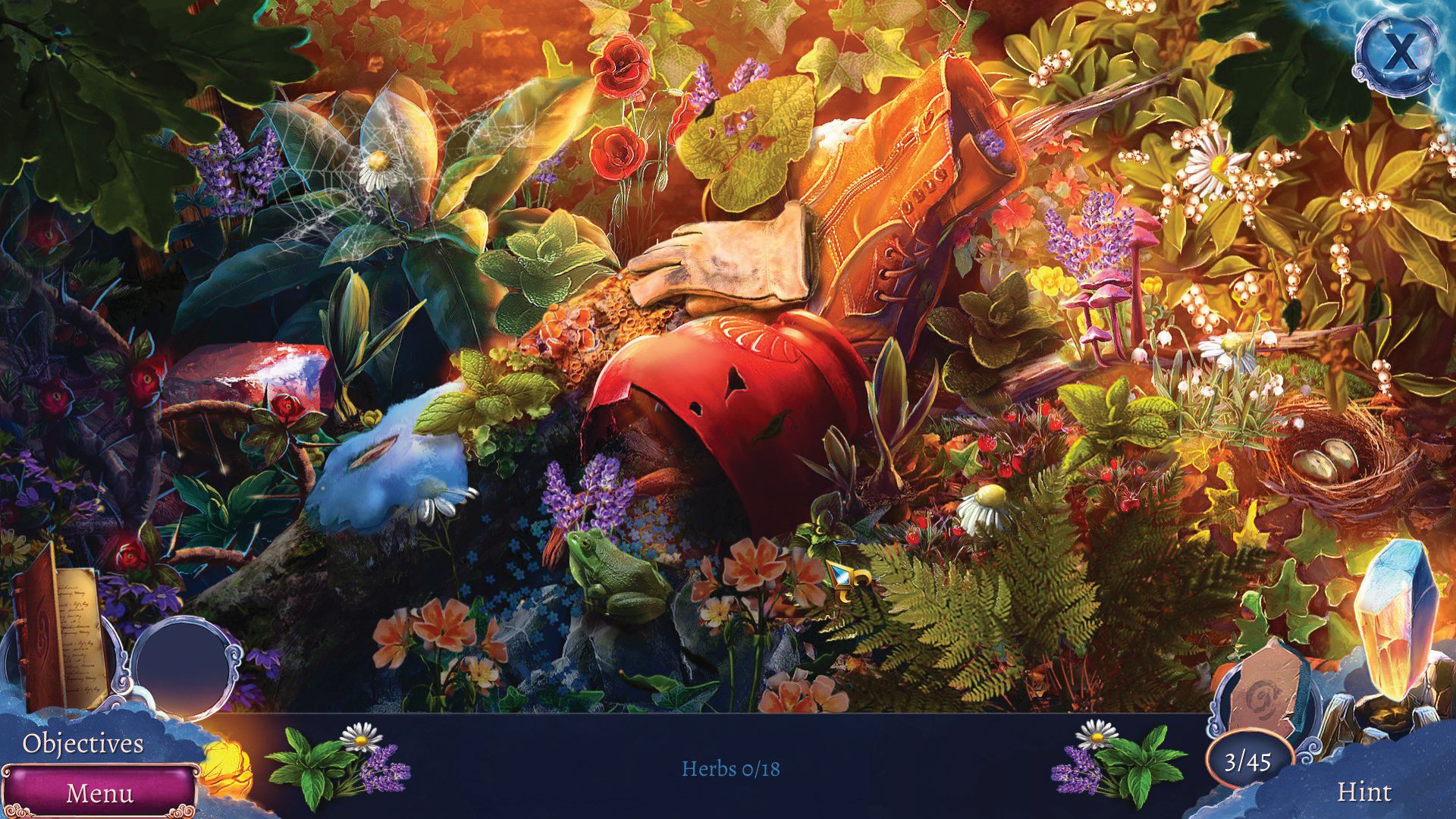Why I love hidden object puzzle adventures
Everything in its right place.

There’s a specific kind of relaxation that I associate with hidden object puzzle adventures. HOPAs are that endless stream of games, often aimed more at tablet than browser, about collecting and using objects. They get their name from the way the player is repeatedly given a cluttered scene and is tasked with finding particular objects within it, like a visual wordsearch. But they can also involve minigames, simple skill challenges and so on. As a very general description, they’re the beach read version of point-and-click adventures.
The relaxation I feel when playing hidden object puzzle adventures is a similar kind to that which I get from jigsaw puzzles, origami, crochet, romance novels, crime procedurals, Rubik’s Cubes and more. It’s the type of relaxation where your hands or eyes are kept busy as you follow a step-by-step process towards a certain (or at least predictable) outcome. Given enough time the jigsaw will be completed, the bird folded, the cushion finished, the love story fulfilled, the murderer caught and the colours matched.
Whether or not the outcome is important, it’s the process of getting there that’s valuable to me. With jigsaws I can shrug off stress or anxiety by narrowing my focus to exactly 1,000 puzzle pieces, all of which have a single correct placement and will eventually build into an image I already know I like because it’s why I picked the box up in the first place. Jigsaws are the opposite of that ‘Where do you see yourself in five years time?’ job interview question.
With origami, I’m essentially following instructions, but within that there’s a joy in manipulating the paper. There’s the pleasure of a sharp crease, or a deft movement. There’s a sense of familiarity when a new project requires you start with a shape you’ve made thousands of times before. There’s a soothing rhythm of production when you’re making lots of the same object, like a thousand cranes.

For fiction, particularly murder mysteries in the vein of Bones or CSI, you’re both watching other people assemble a jigsaw made of forensic clues and trying to piece them together yourself. Because it’s fiction you know that everything will be wrapped up neatly so the cast’s end of the jigsaw is basically sorted.
On your end you’re partly picking up on their science chit-chat and partly using your own expertise in primetime telly. ‘That lad’s the murderer because he was one of the first three guest actors we met and he’s the one who doesn’t yet have a clear motive!’—it won’t stand up in a court of law, but you’ll be entirely correct. This pattern of plotting is just engaging enough to hold your attention, but it won’t consume you. Instead it acts as a canvas for interpersonal drama, character jokes and more.
So to circle back round to hidden object games, I used to think of them as closest to jigsaws. There’s a preordained location for each piece of the overarching puzzle and the pleasure is in slotting them into place. Within that there’s the test of visual skill as you pick objects out of a scene. But after my most recent binge I’ve seen more elements from those other hobbies at play.
Keep up to date with the most important stories and the best deals, as picked by the PC Gamer team.

Finding your feet
The common basic structure of HOPAs allows you to notice the differences between studios, picking out favourite developers or franchises, as with authors or TV showrunners. I have a preferred style for the hidden object scenes themselves. I like them to be incredibly cluttered, but I hate finding long, thin objects because I struggle to notice them, despite knowing the familiar hiding spots. On the origami side, returning to a scene for a different set of objects offers that flicker of familiarity I get from paper base shapes, and a similar divergence of purpose.
For the stories I like them to be a little menacing, but without going full horror. That cuts through the genre’s more saccharine tendencies without resorting to creepy doll faces. And, even if a specific plot isn’t interesting, there are often characters and settings I’ll like enough to follow them across multiple stories.
Not every purchase has been a good one—as with any genre, there are duffs, cash-ins and franchises that aren’t as good now as they used to be. But in those instances it’s also easier to notice the constant mechanical pleasure of hidden object puzzle adventures. Clicking through a to-do list, remembering the heart-shaped lock when you encounter a heart-shaped key, and, above all, the knowledge that all the loose ends will be tied up in a neat, conclusive bow.
Give it a go
Standout HOPAs to get you started.
Grim legends This series of puzzlers uses the trappings of fairytales to tell stories of mysterious ruined weddings, cursed families and powerful artefacts.
Nightmares from the Deep Follow the escapades of Sarah Black, a museum curator who must repeatedly deal with undead menace Davy Jones.
Murder She Wrote Available through Big Fish’s own platform, in this game amateur detective Jessica Fletcher pokes around crime scenes solving five murders.
Dark Parables These twists on traditional fairy stories use hidden object scenes that focus on pieces of an object, not an arbitrary list.

